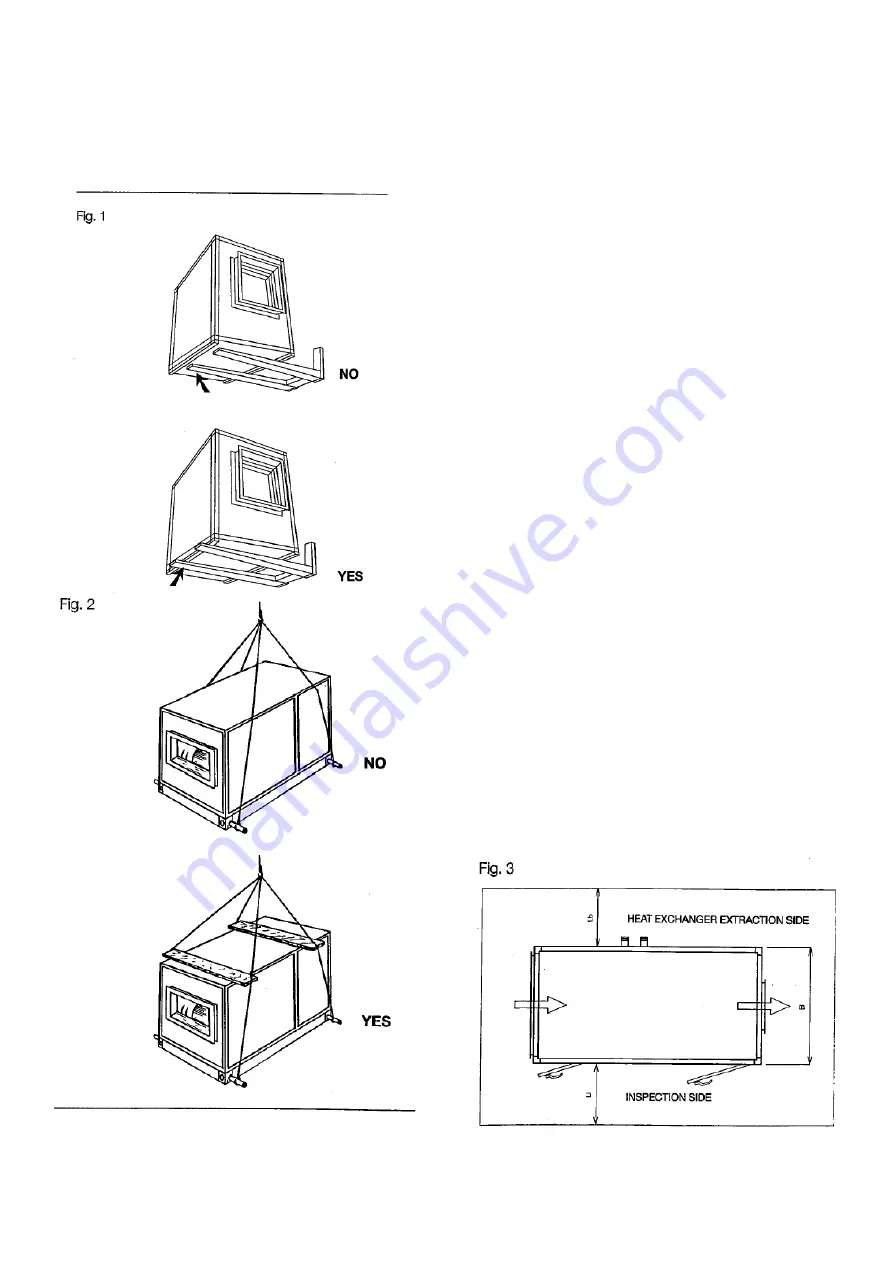
5
If a crane is used, proceed as shown in the illustration,
using spacers to protect the structure (fig. 2).
- During transportation, protect the unit from
atmospheric agents. Special care must be taken if the
unit is supplied disassembled or designed for internal
use.
3.
ASSEMBLY ON SITE
3.1.
POST-TRANSPORTATION CHECK
When the Air Treatment Unit arrives on site, we
recommend you to make a careful inspection of the
structure and the component parts of the unit.
Should you come across damage sustained during
transportation, you must report it on the freight bill. The
carrier must immediately tile a report of the accident to
obtain compensation from the insurance company
3.2. PRESERVATION ON SITE
In order to keep the Air Treatment Unit in good and
efficient condition on site, the following steps must be
taken first:
- Prior to installation, position the Unit and the
accessories in a place affording the best possible
protection against accidental knocks, dust and
atmospheric agents
- Carefully cover the inlets and outlets to prevent foreign
matter from entering the unit and damaging the internal
components
- Extract the pre-filters from the Unit and put them in a
protected place to preserve their filtration efficiency
This is why the superior efficiency filters are delivered
packed; they must be kept in their packages until the
unit is put into service
- Check that the hydraulic connections are protected by
the relevant caps as they were on delivery to the TCF
plant. lf they are not, plug them in order to protect the
exchangers.
3.3.
POSITIONING
3.3.1. Dimensions of installation room
The Air Treatment Unit installation room must be of
sufficient size to permit easy inspection, maintenance
and component replacement.
Accordingly,
the
following
dimensions
are
recommended [fig. 3):





























